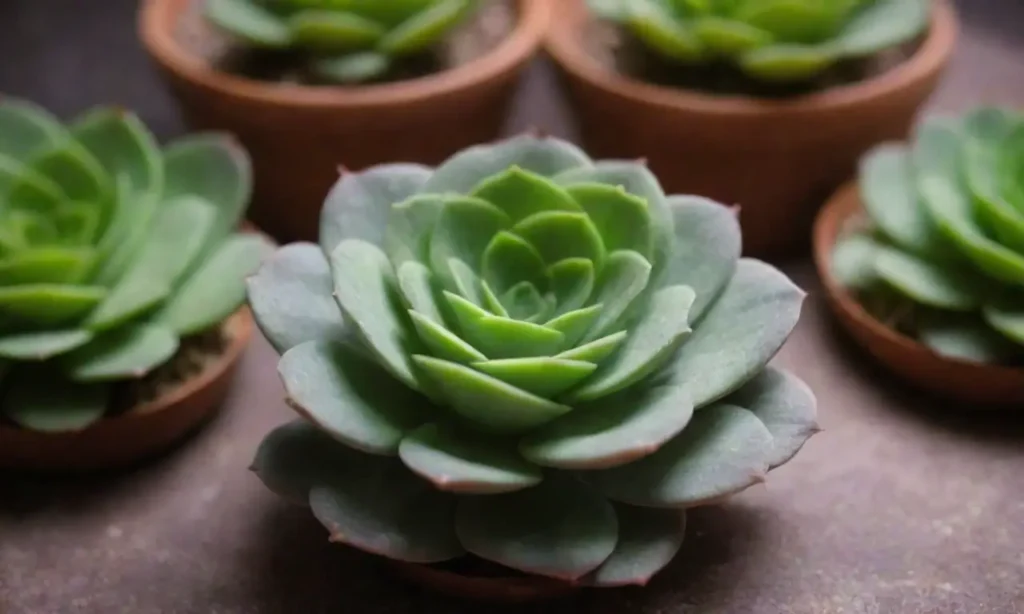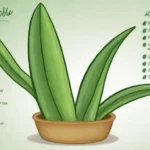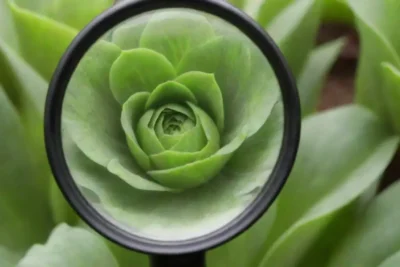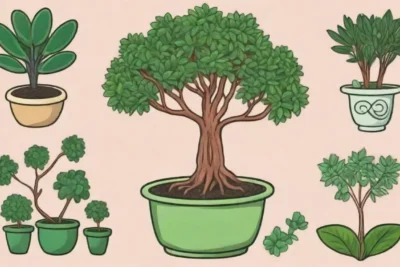
The Potential of Succulent Extracts in Modern Medicine

Introduction
In the realm of botanical medicine, succulents have emerged as fascinating subjects of study due to their unique morphological and chemical characteristics. These plants are typically characterized by their fleshy tissues, which store water, making them incredibly resilient to arid environments. Some of the most commonly known succulent species, such as Aloe vera, Euphorbia, and Haworthia, have been employed in traditional medicine for centuries. However, recent advancements in medical research have ushered in a new interest in the potential therapeutic properties of succulent extracts, leading to breakthroughs that could transform various aspects of modern medicine.
This article seeks to explore the various beneficial compounds found in succulent extracts, their pharmacological potential, and how they can be utilized to combat modern health challenges. Additionally, we will delve into ongoing research, relevant case studies, and the sustainability implications associated with harvesting these plant extracts. Throughout this exploration, a friendly tone will be adopted to invite readers to consider the fascinating world of succulents and their contributions to health and wellness.
The Chemical Composition of Succulent Extracts
Phytochemicals in Succulents
Succulents produce a diverse array of phytochemicals, which are bioactive compounds known for their health-promoting properties. These include flavonoids, glycosides, saponins, and alkaloids, among others. Each of these compounds plays a vital role in the plant's defense mechanisms and contributes to their effectiveness in traditional healing practices.
For instance, Aloe vera is renowned for its high concentration of aloe-emodin, a compound that not only has laxative effects but also demonstrates potential anticancer properties. Studies show that aloe-emodin can induce apoptosis, or programmed cell death, in certain cancer cell lines, thus opening avenues for further research into its usability in cancer therapy. Similarly, Euphorbia tirucalli, commonly known as the pencil tree, contains compounds like euphorbol, which have shown promise in stimulating the immune system and enhancing anti-tumor activity in preliminary studies.
Recognizing the importance of these phytochemicals allows us to appreciate the complexity of succulents as not just water-storing plants but as reservoirs of potent medicinal compounds. The extraction and characterization of these substances are vital, forming a solid foundation for their application in modern pharmaceuticals.
Extraction Techniques
The method of extracting compounds from succulents significantly influences the quality and efficacy of the extracts. Various techniques such as solvent extraction, steam distillation, and supercritical fluid extraction can be employed to isolate desired phytochemicals while preserving their beneficial properties.
Solvent extraction involves soaking the plant material in a suitable solvent, like ethanol or methanol, to dissolve the active compounds. This method is widely used due to its simplicity and cost-effectiveness. However, it may require further purification steps to remove impurities or unwanted components.
 A Succulent a Day: Daily Health Benefits from Nature's Gift
A Succulent a Day: Daily Health Benefits from Nature's GiftIn contrast, supercritical fluid extraction utilizes carbon dioxide under high pressure to extract compounds without the need for harmful solvents. This modern technique is gaining popularity because it preserves the integrity of heat-sensitive compounds, making it ideal for extracting delicate substances from succulents.
By understanding these extraction techniques, researchers can optimize the yield and purity of bioactive compounds from succulents, enabling their application in the formulation of safe and effective medicinal products.
The Therapeutic Applications of Succulent Extracts
Anti-Inflammatory Properties
Succulent extracts have demonstrated notable anti-inflammatory properties, which can be beneficial in treating various chronic diseases characterized by inflammation. For example, studies have elucidated the ability of Aloe vera to inhibit the production of pro-inflammatory cytokines and mediators, thus reducing inflammation both topically and systemically. This makes it particularly useful in the treatment of skin conditions like eczema, psoriasis, and even acne, where excess inflammatory response plays a significant role.
Moreover, the compounds in Haworthia sap, rich in essential amino acids and vitamins, have shown promise in alleviating inflammation associated with joint diseases such as arthritis. The topical application of these extracts may provide symptomatic relief, enhancing the quality of life for people suffering from chronic inflammatory conditions.
Ongoing research into the specific pathways through which succulent extracts exert their anti-inflammatory effects is crucial for developing new therapies. The growing understanding of these mechanisms can lead to the refinement of treatment protocols and the incorporation of succulent extracts into integrative medicine approaches.
Antioxidant Activity
The antioxidant capabilities of succulent extracts are another area worth exploring. Antioxidants are essential for combating oxidative stress, which is linked to numerous diseases, including heart disease, diabetes, and cancer. The rich content of polyphenolic compounds and vitamin C in succulents contributes significantly to their antioxidant potential.
Research in this domain indicates that extracts from Aloe barbadensis, for instance, possess the ability to neutralize free radicals effectively. This phenomenon not only helps in preventing cellular damage but also plays a crucial role in the skin's health by reducing the signs of aging, such as wrinkles and fine lines.
 Diving into the Nutritional Benefits of Medicinal Succulents
Diving into the Nutritional Benefits of Medicinal SucculentsThe extensive utilization of succulents as natural antioxidants could pave the way for developing functional foods and dietary supplements that leverage the power of these plants to enhance overall health and prevent disease.
Antimicrobial Properties
Succulents also exhibit remarkable antimicrobial properties, allowing them to fight against various pathogens, including bacteria, viruses, and fungi. The presence of compounds like saponins and tannins in succulents has been shown to prevent the growth of harmful microorganisms, making them promising candidates for natural preservatives in the food industry and potential treatments for infections.
For instance, an extract from the succulent species Agave has shown the ability to inhibit the growth of E. coli—a common foodborne pathogen—highlighting its potential use in improving food safety. Furthermore, the antifungal properties of extracts from certain cactus species indicate their applicability in treating common fungal infections, contributing to the spectrum of available antimicrobial therapies.
As resistance to traditional antibiotics continues to climb, the exploration of succulent extracts could be a game-changer in combating drug-resistant infections. The synergistic effects of these natural compounds warrant further investigation and could lead to novel antimicrobial agents that hold up against resistant strains.
Sustainability and Ethical Considerations

Harvesting and Conservation
The increasing interest in succulent extracts raises questions about the sustainability and ethical considerations associated with their harvesting. As demand grows, there is a risk of overharvesting certain species, which can threaten their existence in the wild. It is essential for researchers and industry stakeholders to collaborate closely to ensure that harvesting practices do not deplete these vital resources.
One approach to achieving sustainable harvesting is through the practice of cultivation. Many succulent species can be grown in greenhouses or controlled environments, reducing reliance on wild populations. Additionally, regional initiatives aimed at restoring native succulent habitats can further support sustainability efforts while promoting biodiversity.
 Integrating Medicinal Succulents into Your Wellness Routine
Integrating Medicinal Succulents into Your Wellness RoutineIncorporating eco-friendly practices within the extraction process also contributes to a more sustainable model. This includes minimizing waste during extraction, utilizing biodegradable solvents, and exploring regenerative agriculture practices that enhance soil health.
Ethical Sourcing and Fair Trade
Ethical sourcing practices must be prioritized in the booming market for succulent extracts. Ensuring that local communities benefit from harvesting activities can create a fair-trade model that empowers rather than exploits. Community-based initiatives that involve local farmers in cultivation and harvesting can lead to improved livelihoods while promoting the preservation of indigenous knowledge and practices.
Moreover, robust regulatory frameworks are essential to oversee the trade of succulent extracts, preventing untoward practices such as illegal harvesting or selling endangered species. Implementing standards for sourcing and processing succulent extracts will ensure quality, safety, and ethical integrity, promoting the growth of the sector in a responsible manner.
Conclusion
The potential of succulent extracts in modern medicine is undeniably vast and multifaceted. From their rich chemical composition filled with phytochemicals to their diverse therapeutic applications ranging from anti-inflammatory to antimicrobial properties, succulents represent a wealth of untapped resourcefulness in drug development and health solutions. As we navigate the challenges of contemporary health issues, incorporating natural botanicals like succulents could provide innovative paths toward effective treatments.
Yet, with great potential comes great responsibility. The sustainability of these practices hinges on ethical sourcing, conservation efforts, and community empowerment. By combining rigorous scientific inquiry with a commitment to environmental integrity, the future of succulent extracts in modern medicine may not only cater to therapeutic needs but also foster a sustainable and equitable health landscape.
It is time for researchers, industry leaders, and consumers to recognize the importance of these resilient plants. Investing in succulent extracts today can lead the way to groundbreaking advancements in medicine tomorrow, ensuring that the wisdom of traditional practices is harmoniously integrated with cutting-edge scientific research. Ultimately, the nurturing of this relationship with succulents not only enhances our health but also contributes to a more sustainable and ethically responsible future in modern medicine.
 The Healing Power of Aloe Vera: A Deep Dive into Its Uses
The Healing Power of Aloe Vera: A Deep Dive into Its UsesIf you want to read more articles similar to The Potential of Succulent Extracts in Modern Medicine, you can visit the Medicinal Uses category.






You Must Read